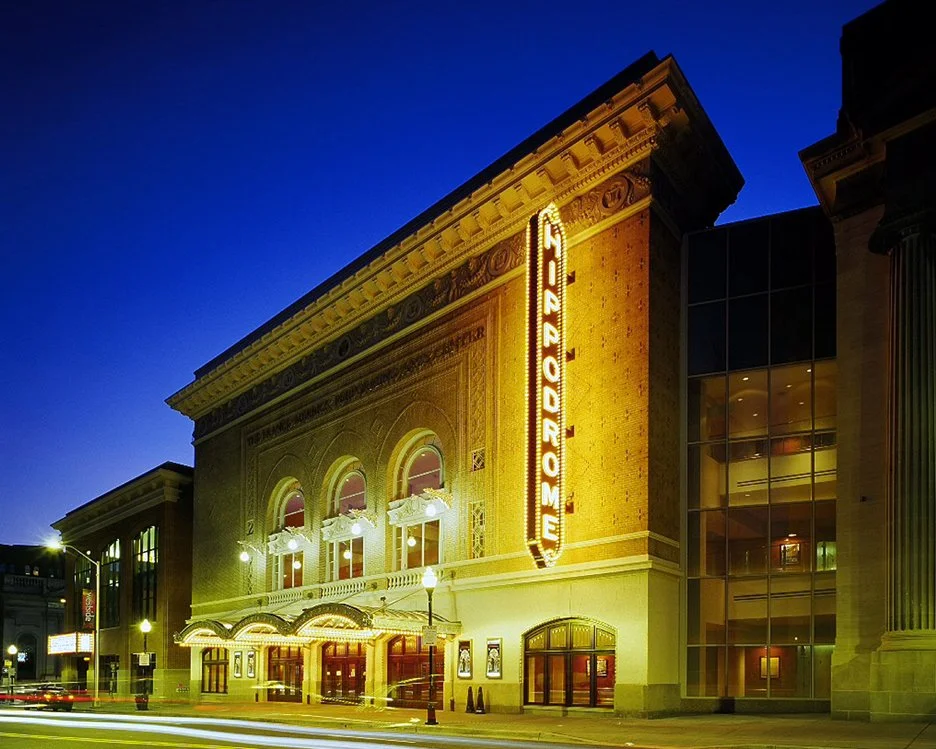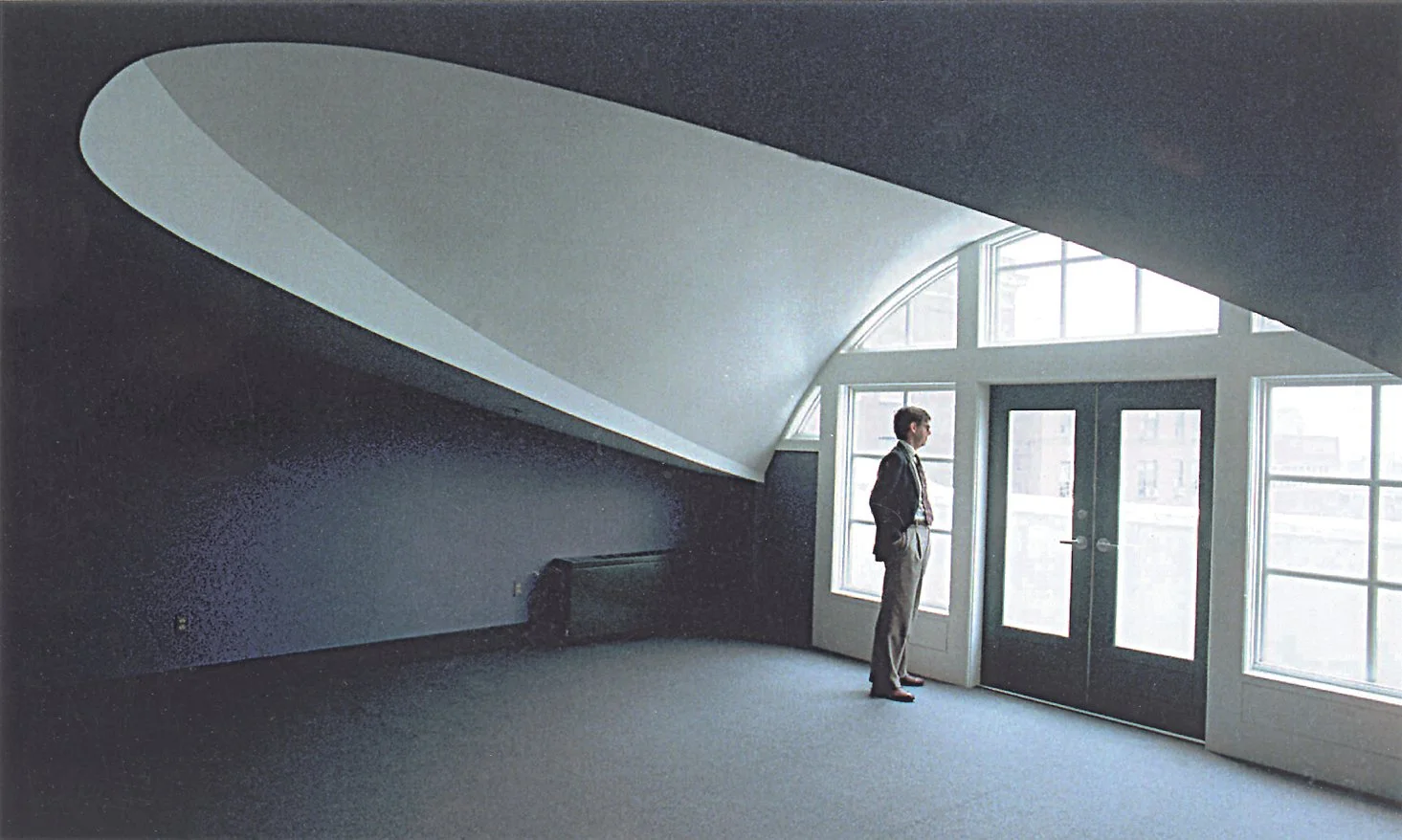The unbuilt York City African American History and Cultural Center commissioned by Crispus Attucks in York, Pennsylvania, also received a $4 million state grant.


The idea for a new type of museum and “community place” in York is coming to life — and receiving recognition long before its groundbreaking.
The proposed Crispus Attucks and York City African American History and Cultural Center, designed by Murphy & Dittenhafer Architects, received a Central PA AIA Design Award just before receiving $4 million in a state Redevelopment Assistance Capital Program (RACP) grant in 2021.
“The design, created by Frank Dittenhafer and his team, was an excellent portrait of our organization’s future,” says Bobby Simpson, CEO of Crispus Attucks, a community-based nonprofit that serves the underserved and economically disadvantaged in the greater York area and beyond. “I have to give the credit to them because they understood the importance of preserving our culture and brought our idea to life. It’s no surprise to me that it’s been received so well.”
A new museum
The proposed Crispus Attucks and York City African American History and Cultural Center would sit at the north end of the organization's parking lot off Boundary Avenue. The design vision was revealed at the March 2021 Crispus Attucks annual meeting, where Simpson made a call for York’s “movers and shakers” to support the $8 million project.
The building is expected to be a little over 19,000 square feet and comprised of a three-story (four floor levels) section and a tall one-story event space accommodating more than 100 people. Each room in the Center will guide visitors through different stories and themes in York City and County’s African American history. The auditorium will be available for special presentations, performances, and community gatherings.
“This will be a place to really celebrate,” Dittenhafer says. “It’s not to be a dry, depository of things and documentation, but a place that celebrates and acknowledges the accomplishments in a variety of realms.”
The history held within the facility will be displayed in a variety of ways. A news reel could possibly show footage of the 1968 racial confrontations against a wall or along a stairwell, putting the realities of history in the viewers’ face. A cascading stair isn’t just a way to get from one section of the building to another but becomes part of the stories told.
A rooftop deck will not just provide a beautiful view of York City but can be a place to storyboard community and point out where certain events took place. It becomes a stage for sharing memories and points of York City African American history.
Like us on Facebook!
The space is also designed to showcase and celebrate Black artists. The first and second floor and different sections of the building will all be connected, to layer experiences and not just send visitors from room to room. Rather, the layout builds upon the information and stories, so people are emotionally drawn into the history, rather than through an academic or stagnant presentation.
“I sensed the momentum for this facility was significant from the start,” Dittenhafer says. “It will be a place where Crispus Attucks and the African American community can take ownership of these stories, to host events and speakers and cultural experiences all year long.”
Dittenhafer sees the building as an outward expression of the pride Simpson conveys in telling this version of York’s history. Rather than become a stagnant chamber of the past, it will be a bright beacon of the future, knowing that the community can accomplish great things by remembering history.
Jury comments
A jury of Architects from Washington, D.C., provided the following comments on the African American History Museum design:
• “This compelling museum proposal for an urban site grabbed our attention as a new cultural destination for the city.”
• “The folded corner of the façade is a strong and striking visual gesture that creates a memorable image for the building.”
• “The jury appreciated the skillful way the extensive program fits into a compact footprint.”
• “There is a successful integration of diverse materials, including metal panels, which bring texture and character to the interior and exterior of the building.”
• “An elegant procession takes the visitor up the main staircase and through a dynamic interior spatial sequence. Skylights at the roof fill the spaces with natural light. Various sizes and shapes of windows allow for unique views from each space back out to the city.”
Murphy & Dittenhafer Architects is working hard and collaborating with the community on an urban planning study for South George Street in York City.
“Historic preservation has always been a hallmark of ours for our 40-year history,” says M&D President Frank Dittenhafer II. These 10 projects exemplify our passion for this work.
It’s the 40th year of Murphy & Dittenhafer Architects, so Frank Dittenhafer II, President, is taking the time to highlight some of our most influential projects over the decades.
We’re celebrating 40 years of influence in Pennsylvania and Maryland. With that, we couldn’t help but reflect on some of the most impactful projects from our history.
Harford Community College’s expanded new construction Chesapeake Welcome Center is a lesson in Architectural identity
At Murphy & Dittenhafer Architects, we feel lucky to have such awesome employees who create meaningful and impressive work. Meet the four team members we welcomed in 2024.
The ribbon-cutting ceremony at the new Department of Legislative Services (DLS) office building in Annapolis honored a truly iconic point in time for the state of Maryland.
As Murphy & Dittenhafer architects approaches 25 years in our building, we can’t help but look at how far the space has come.
Murphy & Dittenhafer Architects took on the Architecture, Interior Design, & Overall Project Management for the new Bedford Elementary School, and the outcome is impactful.
The memorial’s groundbreaking took place in June, and the dedication is set to take place on November 11, 2024, or Veterans Day.
President of Murphy & Dittenhafer Architects, Frank Dittenhafer II, spoke about the company’s contribution to York-area revitalization at the Pennsylvania Downtown Center’s Premier Revitalization Conference in June 2024. Here are the highlights.
The Pullo Center welcomed a range of student musicians in its 1,016-seat theater with full production capabilities.
“Interior designs being integral from the beginning of a project capitalize on things that make it special in the long run.”
Digital animations help Murphy & Dittenhafer Architects and clients see designs in a new light.
Frank Dittenhafer and his firm work alongside the nonprofit to fulfill the local landscape from various perspectives.
From Farquhar Park to south of the Codorus Creek, Murphy & Dittenhafer Architects help revamp York’s Penn Street.
Designs for LaVale Library, Intergenerational Center, and Beth Tfiloh Sanctuary show the value of third places.
The Annapolis Department of Legislative Services Building is under construction, reflecting the state capital’s Georgian aesthetic with modern amenities.
For the past two years, the co-founder and president of Murphy & Dittenhafer Architects has led the university’s College of Arts and Architecture Alumni Society.
The firm recently worked with St. Vincent de Paul of Baltimore to renovate an old elementary school for a Head Start pre-k program.
The market house, an 1888 Romanesque Revival brick structure designed by local Architect John A. Dempwolf, long has stood out as one of York’s premier examples of Architecture. Architect Frank Dittenhafer is passing the legacy of serving on its board to Architectural Designer Harper Brockway.
At Murphy & Dittenhafer Architects, there is a deep-rooted belief in the power of combining history and adaptive reuse with creativity.
University of Maryland Global Campus explores modernizing its administration building, which serves staffers and students enrolled in virtual classes.
The Wilkens and Essex precincts of Baltimore County are receiving solutions-based ideas for renovating or reconstructing their police stations.
The firm has earned the designation annually since 2016 in recognition of its commitment to supporting newer professionals in the field.


































To round out our 40th-year celebrations, enjoy 10 more impactful and diverse Architecture projects designed by M&D. These projects, most of which have received design awards, confirm the variety in design (from scale to usage) that we continue to be involved in today.